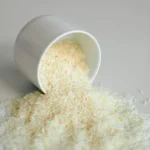Have you ever wondered how long it takes to see results when starting a new routine or embarking on a personal goal? Whether it’s losing weight, learning a new skill, or building muscle, everyone wants to know when they can expect to see progress. While the answer may vary depending on the specific goal and individual circumstances, this article will explore some general timelines and provide insights into what factors can influence the speed of your results. So, if you’re curious about the journey toward achieving your desired outcome, let’s dive in and explore how long it takes to see results!
In This Article
ToggleFactors Affecting Results
When it comes to achieving fitness goals, there are several factors that can influence your results. These factors can vary from individual to individual and can contribute to the effectiveness of your fitness regimen. By understanding these factors, you will be able to tailor your fitness plan to maximize your progress.
Individual Factors
One of the key factors that can affect your fitness results is your individuality. Each person’s body is unique, and factors such as genetics, body composition, and metabolism can play a role in how quickly you see results. It’s important to remember that everyone is different, and what works for one person may not work for another. Embrace your individuality and focus on finding a fitness plan that works best for you.
Type of Activity
The type of activity you engage in can have a significant impact on your fitness results. Different activities target different muscle groups and energy systems in the body. For example, cardiovascular exercises like running or cycling are great for improving cardiovascular fitness and burning calories. On the other hand, strength training exercises like weightlifting focus on building muscle strength and increasing muscle mass. Choose activities that align with your fitness goals and interests to keep yourself motivated and engaged.
Intensity of Activity
The intensity of your workout is another important factor to consider. Higher-intensity activities, such as high-intensity interval training (HIIT), can provide quicker results compared to lower-intensity exercises. This is because higher-intensity workouts challenge your body to work harder, leading to increased calorie burn and improved cardiovascular fitness. However, it’s essential to find a balance between intensity and safety. Gradually increase the intensity of your workouts over time to prevent injuries and allow your body to adapt.
Frequency and Duration
Consistency is key when it comes to achieving fitness results. Regularly participating in physical activity and maintaining a consistent workout schedule can make a significant difference in your progress. Aim for a minimum of 150 minutes of moderate-intensity aerobic activity or 75 minutes of vigorous-intensity aerobic activity each week, spread over several sessions. Additionally, include strength training exercises at least two days per week, targeting all major muscle groups. The duration and frequency of your workouts will depend on your fitness goals and level of fitness.
Consistency
Consistency goes hand in hand with frequency and duration. It’s important to make exercise a part of your daily routine rather than an occasional event. By staying consistent with your workouts, you allow your body to adapt and improve over time. Set realistic goals and create a schedule that you can stick to. You’ll be amazed at the progress you can achieve when you make fitness a consistent part of your life.
Recovery and Rest
Rest and recovery are crucial aspects of any fitness plan. When you exercise, you create tiny tears in your muscles, which need time to repair and grow stronger. Incorporate rest days into your routine to allow your body to recover. Additionally, prioritize sleep and ensure you’re getting enough restorative rest each night. Adequate recovery enhances the effectiveness of your workouts, reduces the risk of injury, and promotes overall well-being.
Diet and Nutrition
Your diet and nutrition play a significant role in your fitness journey. What you eat provides the fuel and nutrients necessary for your body to function optimally and recover from exercise. Aim for a well-balanced diet that includes lean proteins, whole grains, fruits and vegetables, and healthy fats. Stay hydrated by drinking plenty of water, and be mindful of portion sizes. Additionally, consider working with a registered dietitian to develop a personalized nutrition plan that supports your fitness goals.
Genetic Factors
While we can’t control our genetics, they can influence our fitness results to some extent. Genetic factors like muscle fiber composition, metabolism, and body type can impact how our bodies respond to exercise and training. Some individuals may naturally have a higher potential for building muscle or burning fat, while others may have a slower metabolism. Understanding your genetic predispositions can help you set realistic expectations and tailor your fitness plan accordingly.
Age
Age is another factor that can affect how quickly you see fitness results. In general, younger individuals tend to have a faster metabolism and greater potential for building muscle. As we age, our metabolism may slow down, and it may be more challenging to build and maintain muscle mass. However, it’s important to remember that age should never be a barrier to fitness. With proper guidance and an appropriate program, individuals of all ages can experience improvements in their fitness levels.
Prior Fitness Level
Your prior fitness level can also influence your results. If you’re starting from a relatively sedentary lifestyle, you may notice significant improvements in your fitness relatively quickly. On the other hand, if you have been consistently active and fit, your progress may be slower or more incremental. Regardless of your starting point, stay committed and focus on continuous improvement. Every step you take towards a healthier lifestyle is a step in the right direction.
Physical Fitness
Now that we’ve explored the various factors affecting fitness results, let’s delve into the specific areas of physical fitness that can be improved through exercise.
Strength Training
Strength training refers to exercises aimed at improving muscular strength and endurance. It involves lifting weights, using resistance bands, or utilizing bodyweight exercises to challenge and stimulate the muscles. Strength training can benefit individuals of all fitness levels and ages, providing increased muscle tone, improved posture, and enhanced overall strength.
Muscle Development
One of the primary goals of strength training is to promote muscle development. Through regular resistance exercises, your muscles adapt and grow, leading to increased muscle size and strength. This process is known as hypertrophy. Building lean muscle mass not only improves physical appearance but also increases your metabolism, making it easier to manage body weight and improve overall body composition.
Weight Loss
Regular physical activity, including both cardiovascular exercises and strength training, can contribute to weight loss. Engaging in activities that increase your heart rate and burn calories, such as running or cycling, helps create a calorie deficit and aids in weight loss. Additionally, strength training helps increase muscle mass, which can raise your basal metabolic rate (BMR) and promote fat burning even at rest.
Flexibility
Flexibility is an essential component of physical fitness that often gets overlooked. Regular stretching and flexibility exercises help improve joint mobility, enhance muscle elasticity, and reduce the risk of injury. Engaging in activities like yoga or Pilates can significantly improve flexibility by lengthening and stretching muscles, tendons, and ligaments.
Endurance
Endurance refers to the ability of your muscles to sustain physical activity over an extended period. Activities such as jogging, swimming, or cycling can help improve cardiovascular endurance. Regular endurance training enhances your heart’s ability to pump blood efficiently, improves lung capacity, and increases your overall stamina. As a result, you’ll be able to engage in physical activity for longer durations without feeling fatigued.
Psychological Benefits
In addition to the physical changes that occur as a result of exercise, engaging in regular physical activity can also yield significant psychological benefits. Let’s explore some of the ways exercise can positively impact your mental well-being.
Stress Reduction
Exercise is a natural stress reliever. Engaging in physical activity stimulates the production of endorphins, which are chemicals in the brain known as “feel-good” hormones. These endorphins promote feelings of relaxation and well-being, helping to reduce stress and anxiety. Engaging in activities like brisk walking, yoga, or dancing can have a profound positive impact on your mental state.
Improved Mood
Regular exercise has been shown to improve mood and reduce symptoms of depression and anxiety. Physical activity stimulates the release of neurotransmitters like dopamine and serotonin, which are known for their mood-boosting effects. Additionally, exercise provides a distraction from negative thoughts and an opportunity to focus on the present moment, promoting a more positive outlook on life.
Increased Confidence
Achieving personal fitness goals can significantly boost self-confidence. Whether it’s reaching a new strength milestone, completing a challenging workout, or noticing improvements in your physical appearance, each accomplishment serves to reinforce your belief in yourself. Regular exercise can help you develop a positive body image and improve your overall self-esteem.
Better Sleep
Adequate sleep is crucial for overall health and well-being. Engaging in regular physical activity has been shown to improve sleep quality and duration. Exercise helps regulate the sleep-wake cycle, promotes relaxation, and reduces anxiety, making it easier to fall asleep and enjoy a restful night’s rest. Improved sleep quality can lead to increased daytime alertness, improved mood, and enhanced cognitive functioning.
Enhanced Cognitive Functioning
Exercise does not only benefit the body; it also has a positive impact on the brain. Research has shown that physical activity promotes cognitive function, including memory, attention, and problem-solving skills. Regular exercise increases blood flow to the brain, promoting the growth of new neurons and improving overall brain health. Additionally, the release of endorphins during exercise helps reduce stress, leading to improved mental clarity and focus.














No comment yet, add your voice below!